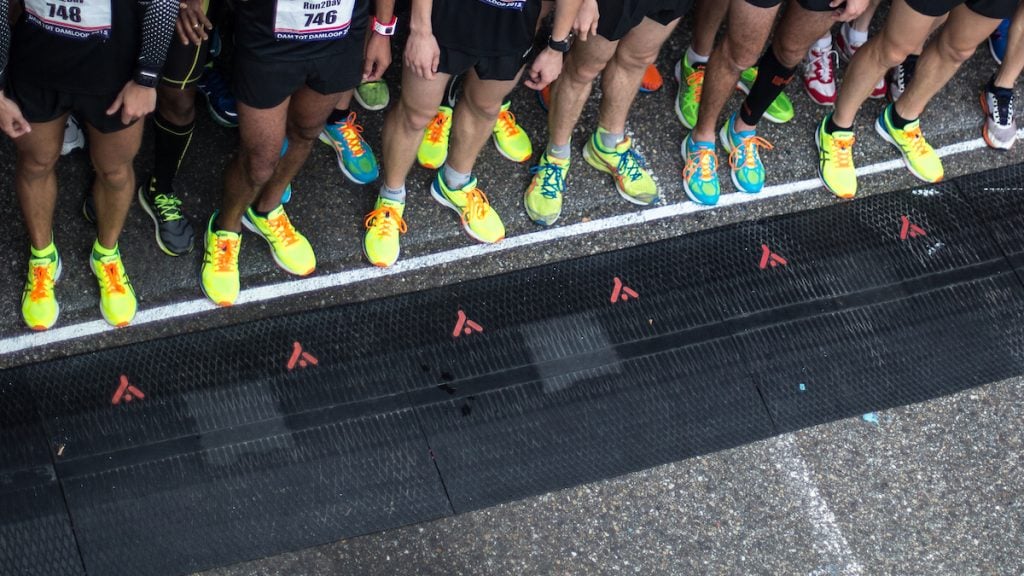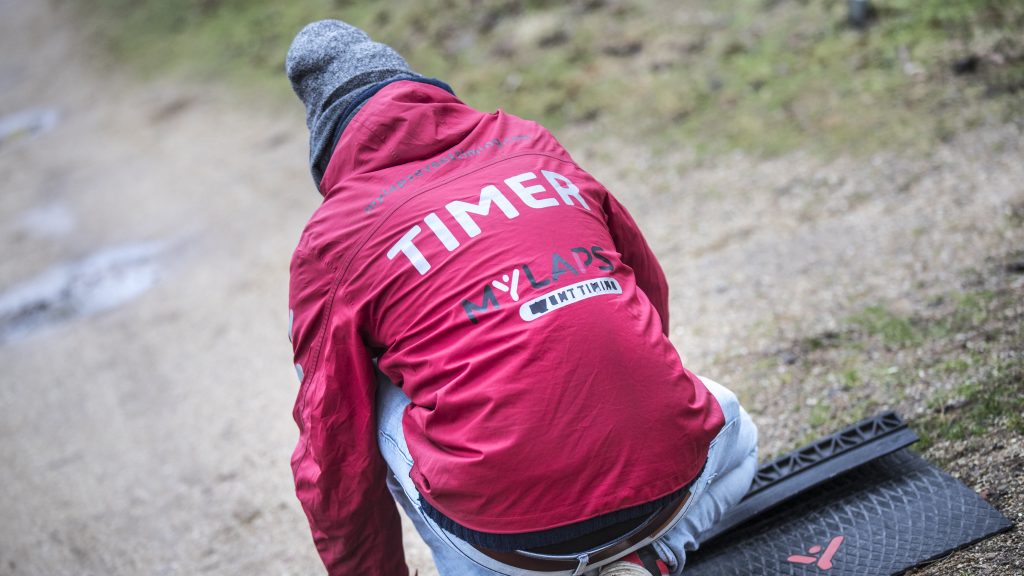 How do you time a running race?
How do you time a running race?
Timing a running race. It’s really straightforward but when you’re starting out, you might find yourself having some questions: How does chip timing work? Why would I use it? Do I want to time myself, or do I want to hire a timer? Can I rent equipment, or do I have to buy a fancy setup straight from the start? We’ve got the most frequent questions answered for you to help understand the basics of timing.
1. Basics of timing a running race
You might have already heard terms like ‘chips’ and ‘mats’, and perhaps already taken a look into automated timing. Before we dive deeper in any other timing subjects, let’s explain the basics!
2. Active or Passive chip timing systems
There are two options for automated timing systems: Active or Passive timing system. The main difference between the two are the chips/tags. Active transponders send a signal and get detected by the antennas or transponder loops. Passive chips don’t send a signal but are activated and detected by antennas. Read more on the difference between active and passive timing systems. For mass running events, using passive chips is most common.
3. Running chip timing equipment
A basic setup is required for running. As explained above, passive systems are most common. When timing a running race, your main equipment will consist of tags, detection mats, a decoder, and software. It is also possible to hire a timing company, which we will discuss later.
Tags

Tags are the tiniest component of a timing setup. A tag is a small chip/transponder that the athletes wear to get detected by the timers. Tags can be active or passive, depending on your system of choice. For big mass sports like running, the MYLAPS BibTag System is often the ideal choice (passive). Each tag has a unique ID and gets attached to the back of the runner’s bib.
Bibs
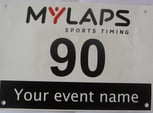
Bibs display the runner’s starting number which is worn by the athlete. Sometimes a runner has two bibs. One on the front, and one on the back. On the back of the front bib, the tag is attached. For optimal reading rates the tag should be placed horizontally. In that position the tag is pointed at the correct location. Wearing the chip other than this doesn’t make it unusable, but less readable. The more dislocated, the bigger the chance the chip will get missed.
Mats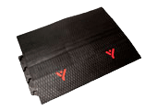
To detect the tags, a detection mat is used. Detection mats are placed at the start, finish and split timing locations. These mats contain antennas to detect the tags worn by the athletes.
Decoders
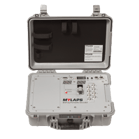
Let’s get a little more technical. When runners cross the mats, their passings will be detected. Taking into account that many runners are crossing the line at once, a lot of data is transferred. The decoder translates the data into usable information. It decodes all passings into the athlete’s IDs and their measured times. Portable decoders have an integrated battery and can measure up to 50 passings per second.
Software

With the data being handled by the decoder, the gathered information can be used by the timer. This is done by using software that is specially developed for the decoder. The software is used to set-up, time, create and publish reliable and accurate results.
Scoring
Did you know that generating the results of a race, actually isn’t part of timing, but is called scoring? After the decoder has calculated the raw data of the runners, a big pile of processed data is created. This data is not yet transferred into a competition result. The timer needs to process the race results further into competition results, to create a ranking for several categories, for example. This gets a little more complicated when different categories are participating in the same race. This is where scoring software comes in. It makes the life of a timer a lot easier! MYLAPS offers software called Timing & Scoring.
Live Results
You can choose if you want to publish results live or after the event. There are several partners that provide extra services that enhance the event experience for both fans and athletes. Elements you can think of are live tracking & real time leaderboards. With mobile apps fans and followers have the opportunity to follow all runners in real time.
4. Why and when should I hire a timer for running races?
To answer this question, ask yourself another question first: Is it worth to invest in my own chip timing equipment or is it more beneficial for me to hire a professional timing company? Owning your own timing system has some benefits, but for some (smaller) event organizers hiring a professional timing company is a better choice. Read more about how to choose between hiring a timer or timing the event yourself.
5. How much equipment do I need for running races?
When you decided to invest in your own timing equipment, you can start thinking of what timing setup works for you. If you time small scale events, you obviously won’t need as much compared bigger scale events. Earlier in this blog we mentioned a basic setup.
Find below an overview of the differences between a basic and a more advanced setup. Keep in mind that this is just an indication, and not a must have. Your ideal setup might be slightly different, and therefore it’s always advised to discuss your wishes with your equipment supplier.
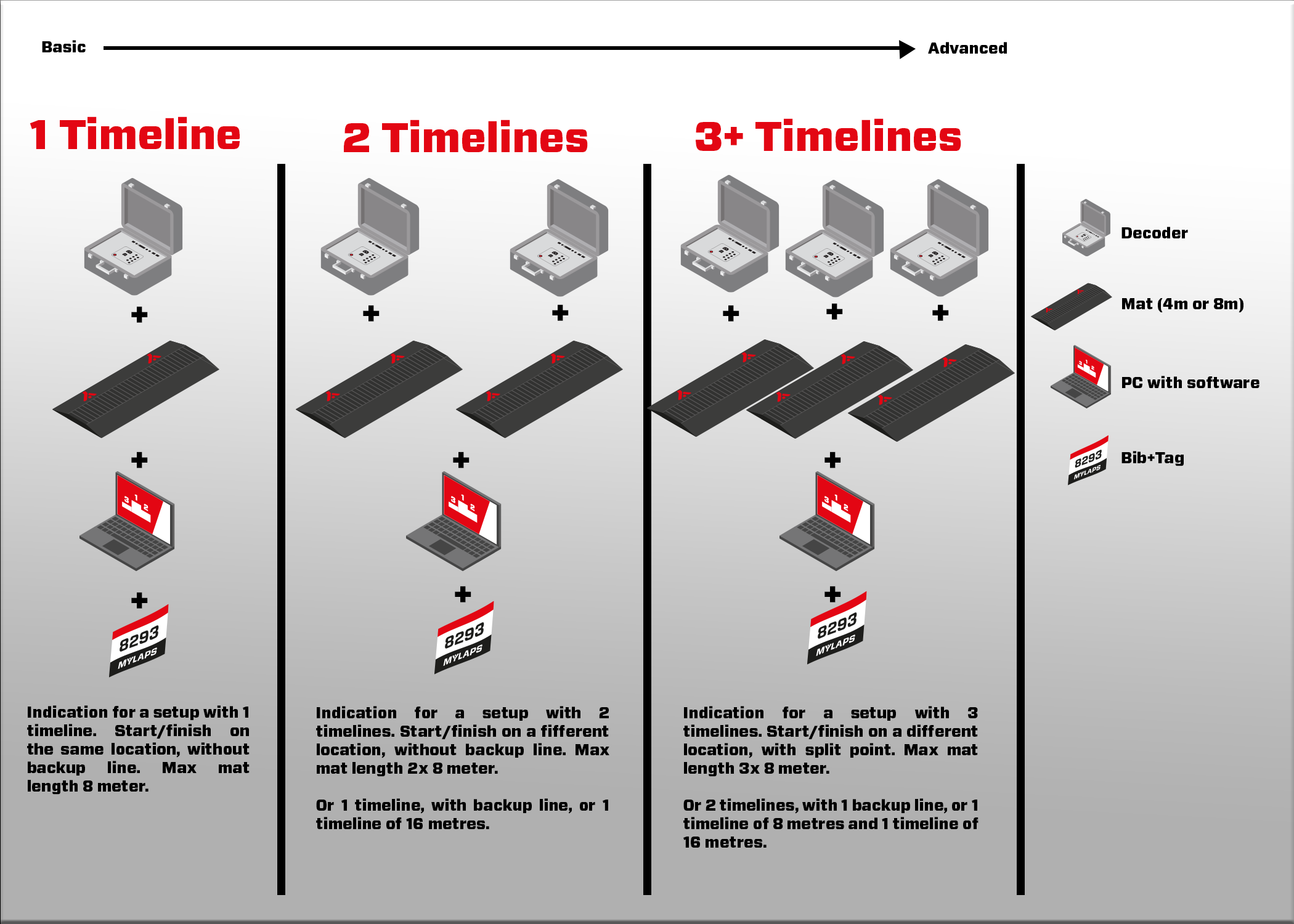
6. How soon do I need to prepare for timing my running race?
This depends on different factors. When you’re preparing for a race, certain topics will need a deeper dive. Read more about how to prepare for timing a running race. However, always keep in mind: A good preparation is half the work!
7. Bonus Tip
Practice makes perfect, and fake it till you make it: Pretty cheesy sayings, but the essence is simple: Try to learn from others. When you're new to timing running races, it's good to either 'shadow time' together with a more experienced timer, or ask for organizational tips. In a previous blog Lander Fraile, an experienced timer, talks about timing the Zegama Aizkorri Trail Run, one of the most prestigious Trail Run races of the calendar.
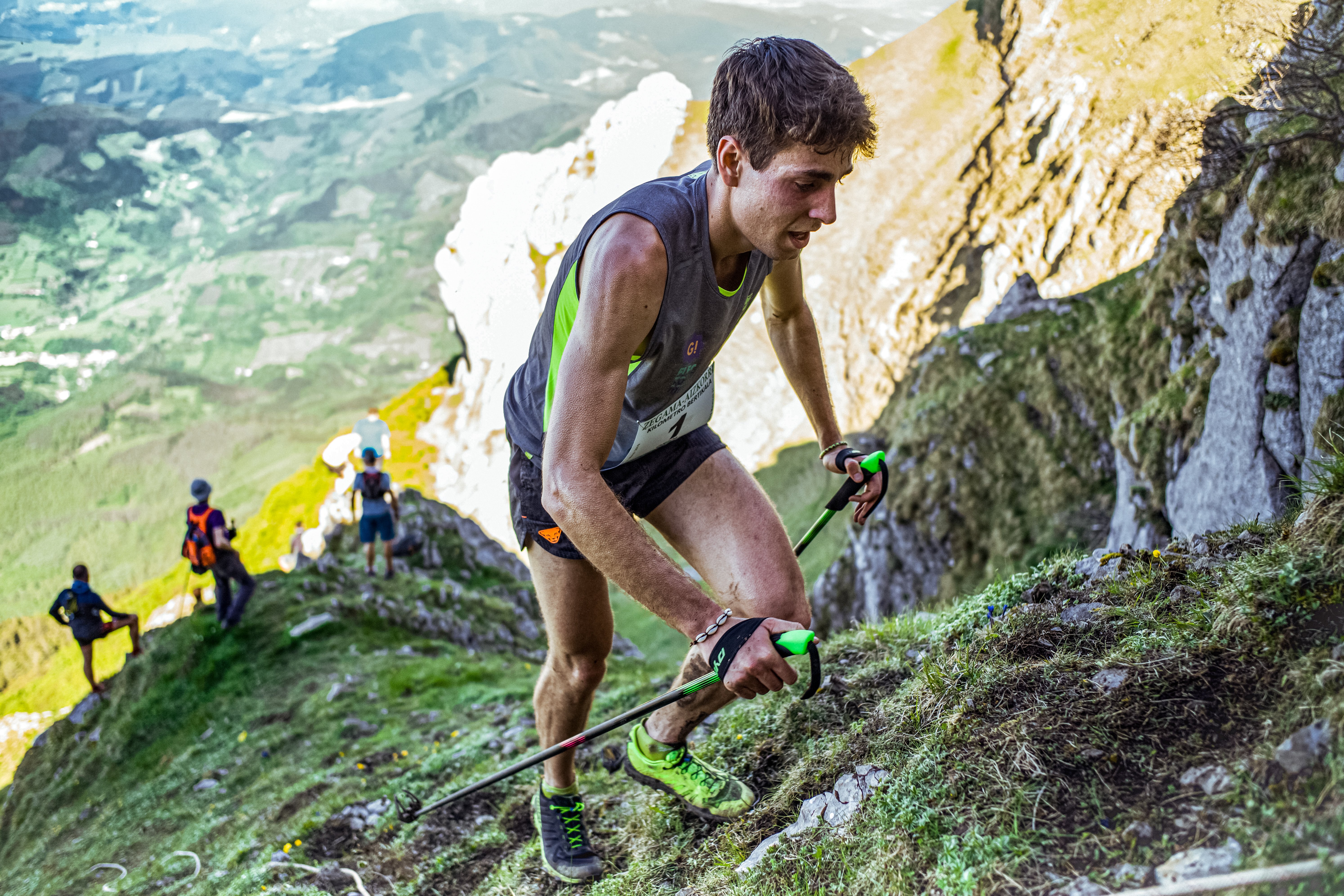
Congratulations! You’ve learnt all about the basics of timing a running race! Hungry for more? Have a look here for information about MYLAPS products for timing a running race.
Get in touch!
Looking for more info or wish to contact one of our team members? Don't hesitate to contact us!

